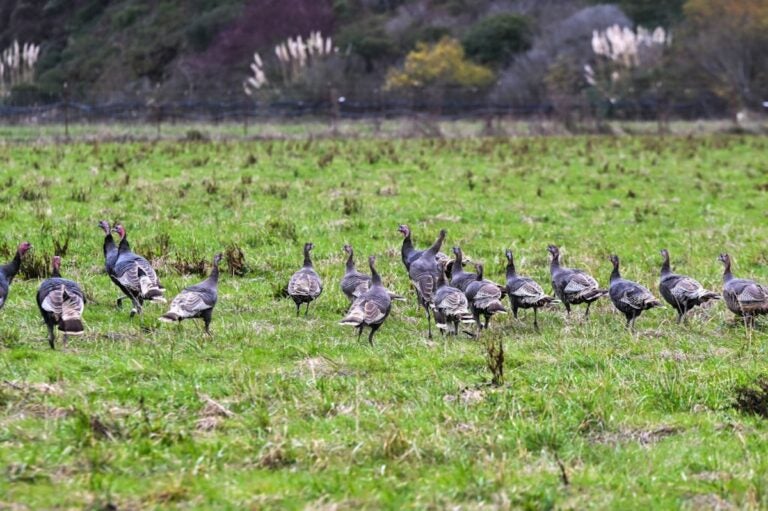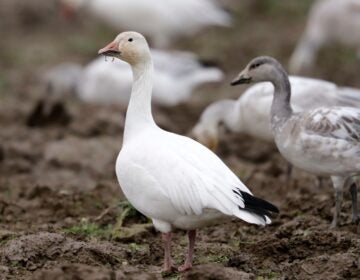Bird flu Q&A: What to know to help protect yourself and your pets
Each week some revelation about bird flu seems to flutter through the news cycle. Here's what the latest research is saying about how it is spreading.

Turkeys at a farm as California declares state of emergency to prevent new public health crisis on Bird flu in Pescadero, California, in December. (Anadolu/Anadolu via Getty Images)
This story originally appeared on NPR.
Avian influenza has a grip on dairy herds in California, a few people have fallen seriously ill in North America and researchers have found that a single mutation could give the virus a better foothold in a person’s upper airways.
At the same time, those who’re tracking avian influenza’s footsteps say most of us don’t need to be preoccupied with the virus as we go about our day, at least for now.
“We’re really on alert,” says Benjamin Anderson, an infectious disease epidemiologist at the University of Florida. “It’s a tricky thing to communicate.”
Fears that H5N1 bird flu could unleash a pandemic go back decades, and previous strains of the virus have proven quite deadly in humans. That has not been the case during this current outbreak. Most infections linked to the strain of bird flu circulating globally in wild birds and U.S. dairy herds — technically known as clade 2.3.4.4b — have been mild.
But two recent cases are a reminder this isn’t a foregone conclusion.
First, a teenager in Canada was hospitalized, as was a Louisiana resident who was exposed to backyard flocks. In each, genetic analysis suggests mutations may have emerged as the virus replicated inside of them. However, there’s no evidence any of this has led to human-to-human spread.
“The difficult thing is it’s hard to know how much of a heads up we’re going to get that things are changing,” says Richard Webby, a virologist who studies avian influenza at St. Jude Children’s Research Hospital.
Here’s what some experts are saying now.
Should I be worried about catching bird flu?
Despite its wide reach, the strain of highly pathogenic avian influenza — so named because of its lethality in poultry — driving the current outbreak has not adapted to easily infect humans, meaning it’s still “essentially a bird virus,” says Webby.
Of the more than 65 human cases in the U.S., almost all of them can be traced back to some kind of close contact with infected poultry, wild birds, or dairy cattle. So, if you’re not dealing directly with any of these animals, the chance of catching the virus in its current form remains quite low.
Okay, I’m not butchering or touching any birds, but do I need to stop using my bird feeder? What about touching bird poop?
For the average person, it’s unlikely you’d get infected from a stray piece of bird poop or from touching your bird feeder, although there isn’t necessarily data on these specific scenarios, says Anderson.
How long bird flu survives depends on a variety of factors. For example, it can survive for weeks in certain cold and wet conditions. Contracting the virus from a contaminated surface is a legitimate concern for people who are “handling equipment associated with animal care on poultry or dairy farms,” says Lakdawala, adding that people should be cautious at petting zoos and agricultural fairs, too.
WHYY is your source for fact-based, in-depth journalism and information. As a nonprofit organization, we rely on financial support from readers like you. Please give today.





